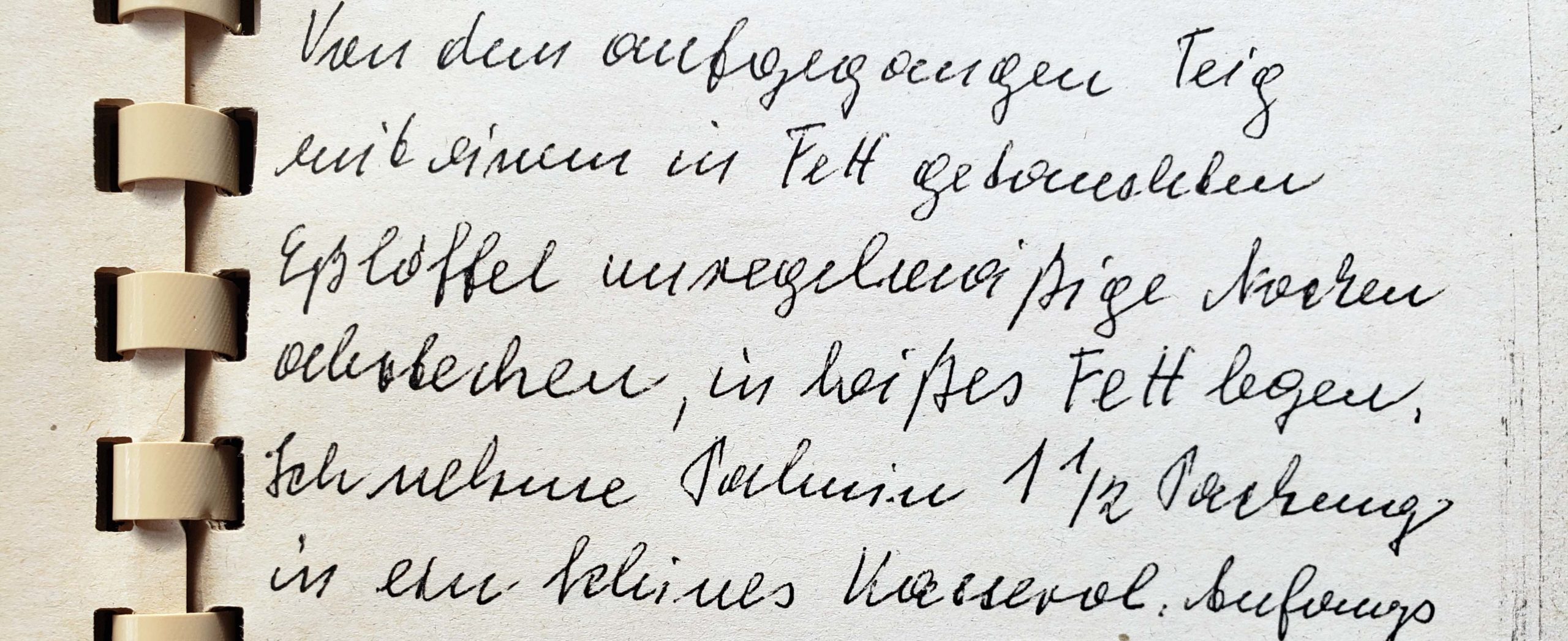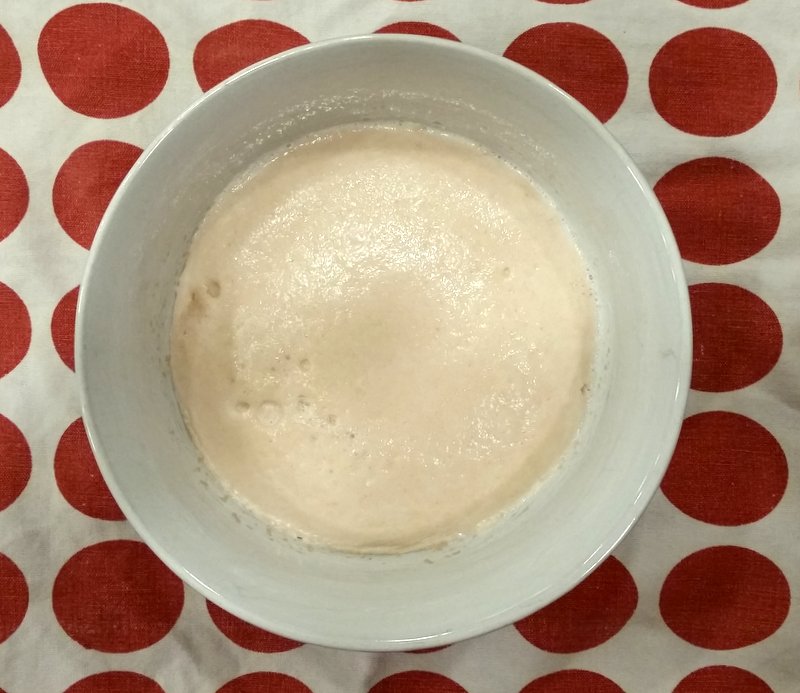
Snippet of my grandmother’s original handwritten recipe
For Chanukah it was become a tradition in my house to make one of my German grandmother’s recipes, Gebackene Mäuse. The recipe itself has nothing to do with the holiday.
However, it involves frying delicious yeast dough in oil, and what could be more appropriate for Chanukah than that?
As with all my grandmother’s recipes, it is a simple. It only requires time, i.e. not so much actual cooking time–the frying goes pretty fast–but time for the yeast dough to rise.
Gebackene Mäuse
500 g flour (4 cups)
1/8 teaspoon salt (= one pinch between your fingers)
80 g sugar (3/4 cup)
100 g butter (1 stick minus one tbsp.) (ideally, take the butter out of the fridge a few hours before you plan to make this so it gets really soft)
1 egg (let egg sit outside for a while so it has room temperature)
250 ml whole milk (1 cup)
1 packet of dry yeast
Grated rind of one lemon (not absolutely necessary but makes for a nicer taste)
One handful raisins (grandmother recipes always involve “hand” measurements, don’t they?)
Lots of oil for frying (I use canola oil)
Warm up the milk so it’s warm to the touch, not hot! Pour dry yeast into a little bowl, add one teaspoon of sugar and one teaspoon of flour, then pour in the lukewarm milk and stir a little. This is your “pre-dough.” You need to let it sit in a warm, non-drafty place for 20 minutes so that the yeast can rise. I usually warm the oven to 110F and put it in there but sometimes I actually wrap a kitchen towel around the bowl (to protect from draft) and put the bowl on our kitchen steam radiator (works even better but we also live in a 100-year-old building).
In the meantime, mix the flour, salt and sugar in the large bowl. Get the butter ready: Either melt it in a pot (I use the same pot I warmed the milk in) and then let that sit for a while so the butter isn’t hot and won’t fry the egg when you put it all together. Or, if the butter is soft, cut it into little pieces and plop those in with the flour and sugar.

This is what the pre-dough should look like when it’s ready to be used.
Once the pre-dough is ready (It should look frothy on top), pour it into the flour and sugar mixture. Add the other ingredients: butter, egg, lemon rind and raisins. Now stir the dough until it comes together. I use the dough kneading hooks on my hand mixer as I am one of those odd people who bakes a lot but doesn’t own a KitchenAid stand mixer. You can also use a big spoon! Eventually the dough will form a ball.
The recipe works pretty well, so the dough should not be sticky.
You should be able to knead it comfortably without it sticking to your hands. If it sticks, add a bit more flour. Knead the ball for a minute or so, then put it back in the bowl and put the bowl back in the warm oven and let it sit there for at least 30 minutes. Up to an hour is fine, too. The dough needs to increase in size. Don’t let it rise for more than an hour, however, or it will be too puffy. When the dough is done rising, knead it again for a minute; that will decrease its size but that’s OK. You should have a nice, slightly fluffy ball to work with.

A pan full of Mäuse, happily frying
Now it’s time for the Chanukah part: frying dough in oil!
Now pour oil into your frying pan, about ½ inch deep, and heat it on medium heat. Dip a tablespoon into the hot oil and with this spoon carve pieces from the dough and put them into the hot oil. You’ll have uneven, tablespoon-size clumps of dough frying in the pan. That’s the way it should be. It won’t take long for them to turn dark brown on the bottom. When you see that brown coming up on the sides of the clumps, it’s time to turn them around. I use two forks to do that. Once they are dark brown on both sides, they are done. Use a toothpick to prick one to make sure they’re not gooey inside. The toothpick needs to come out clean for the Maus to be done.
The Mäuse shouldn’t get too dark (i.e. black), or they will taste like burned toast. Fish them out with two forks and put them a plate covered with a paper towel to drain extra oil. In my experience the whole frying process doesn’t take more than ten minutes for one load. You’ll have to add some oil after each load so that it stays deep enough.
I get at least 30 “Mäuse” out of this recipe.
They taste best when fresh and slightly warm, but they keep well and you can warm them up, and they also taste good cold.
By the way, Gebackene Mäuse means “fried mice,” which sounds disgusting but I assure you, they’re not. Plus mice are considered to be cute, right? In any case, this is one of our cherished family holiday recipes.
With best wishes for a yummy Chanukah, Christmas, or whatever you are celebrating this holiday season!
